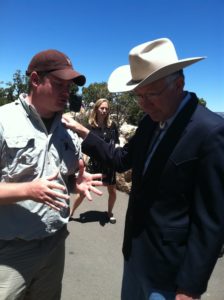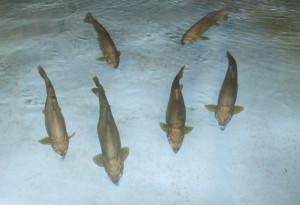We have much more to do and your continued support is needed now more than ever.
Support Recreational Access in Public Lands

A solution to this public access problem is pending before Congress. The Land and Water Conservation Fund (LWCF) established 50 years ago is a bipartisan conservation delivery system that is financed by off-shore oil and gas revenues. This program, which conserves irreplaceable lands and improves outdoor recreation opportunities throughout the nation, is up for reauthorization and it’s important that LWCF be fully funded to provide the unmet conservation needs of the sportsmen and conservation community.
Additionally, LWCF must also continue supporting the Coconino National Forest which includes the 56,000-acre Sycamore Canyon Wilderness area. The Forest Service uses funds from the Land and Water Conservation Fund and the Federal Land Transaction Facilitation Act (FLTFA) to protect an area known as the Packard Ranch property where two important streams, the Verde River and Sycamore Creek meet. These waters are home to threatened and endangered fish species such as the Gila trout and must be preserved.

Urge your member of Congress to support the Land and Water Conservation Fund!
 Tweet and ask for congressional support of the Land and Water Conservation Fund! Find a list of verified US Congress Twitter accounts here.
Tweet and ask for congressional support of the Land and Water Conservation Fund! Find a list of verified US Congress Twitter accounts here.
 About the Author: Ben Alteneder is an avid angler and board member of the Arizona Wildlife Federation, the oldest conservation organization in Arizona. Most recently he served as the Congressional Relations Manager for the Arizona Game and Fish Department representing the Game and Fish Commission. Previously Ben served as the Legislative Liaison for the Arizona State Land Department managing their government relations and public affairs. Ben is managing partner at backcountry consulting a public policy and advocacy firm.
About the Author: Ben Alteneder is an avid angler and board member of the Arizona Wildlife Federation, the oldest conservation organization in Arizona. Most recently he served as the Congressional Relations Manager for the Arizona Game and Fish Department representing the Game and Fish Commission. Previously Ben served as the Legislative Liaison for the Arizona State Land Department managing their government relations and public affairs. Ben is managing partner at backcountry consulting a public policy and advocacy firm.





















